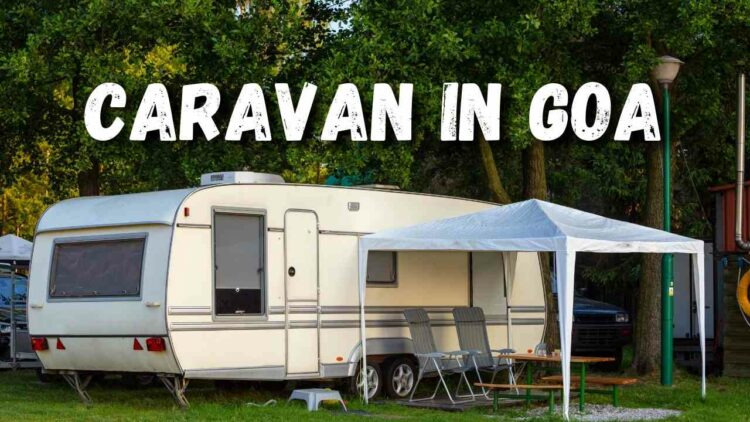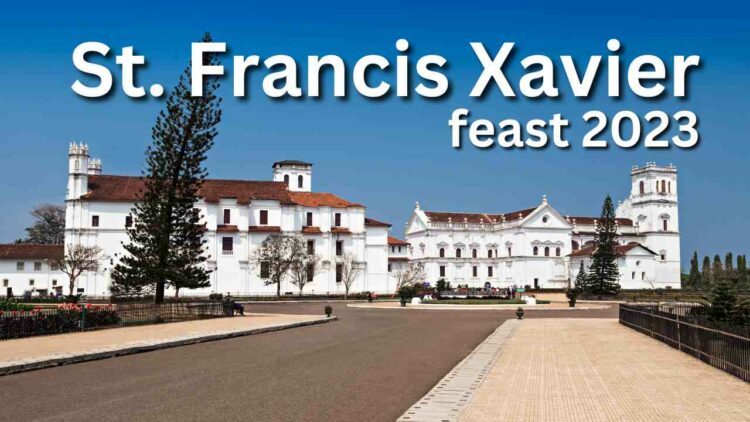Goa is a state of history, culture, ancient temples, churches, forts and much more. This is why Goa is one of the top places in India to host tourists from all over the world. Moving towards historical monuments, there is a huge list of forts in Goa. It is a place of ancient feel and also the recent trend of western touch in the form of nightlife. But today my focus will be on taking you all to the great history of the forts of Goa and their timings and if there is any entry fee. So, Stay tuned till the end for some special tips.
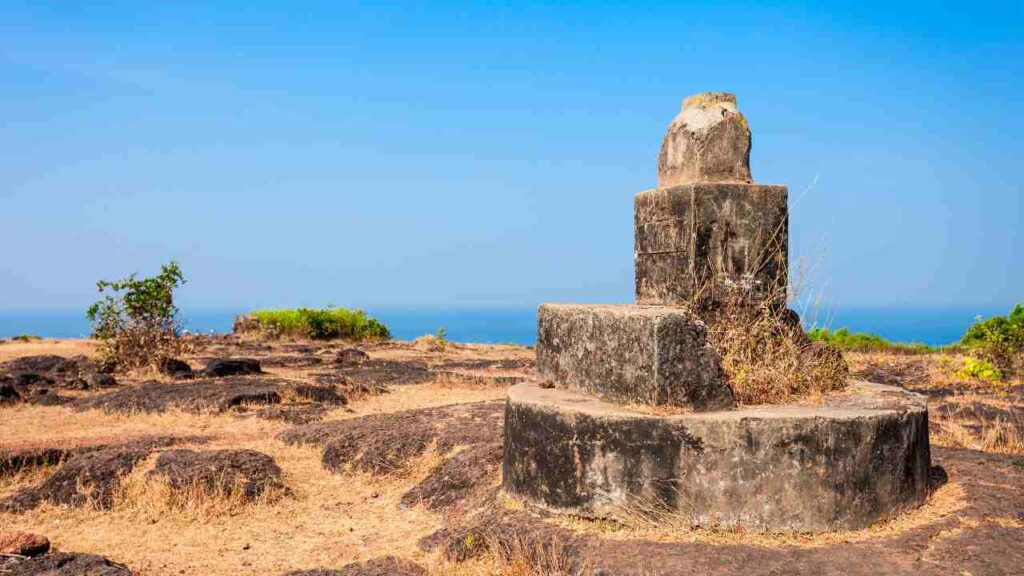
Forts in Goa
Forts in Goa served as strongholds for safeguarding territory, defending against enemies, and launching attacks. Given Goa’s rich history of colonialism and conflicts involving the Portuguese, Marathas, and Mughals, the region boasts 13 ancient forts. Each fort has its unique history, visiting hours, and an entry fee for tourists to explore these historical treasures.
1- Mormugao Fort of Goa
As the history of colonialism in Goa is 450 years old, there is a lot of evidence of the same, which still stands to date. Especially those that were built to safeguard the Ports, trade, and authorities. One such monument still exists is the Mormugao Fort, the construction of which began in 1624 to protect the Mormugao port in the coastal region.
In 1703, the Viceroy of Goa relocated the capital of the Portuguese empire from Old Goa to Mormugao. This decision was driven by the persistent Maratha incursions, prompting the Viceroy to seek refuge within the protective walls of Mormugao Fort. Nonetheless, the Viceroy reversed the decision and shifted the capital again to Old Goa since the Margao wasn’t at the center of the territory.
While Portuguese-style architecture dominates, Mormugao Fort also has traces of Marathas occupancy. The attraction of the Fort is the presence of the two fountains, the Fonte de Malabar and the Fonte Santo Ignacio, which are speculated to originate from a gold mine and sulfur mine, respectively.
Current Situation of Mormugao Fort
The Mormugao Fort is a tourist attraction for its historical importance and breathtaking view of Mormugao, Port situated on the mouths of Zuari River and Varca Beach. Moreover, as the traditional wooden fishing boats line the shore during summer, the beach offers a delightful sight, and the Fort provides an excellent vantage point to appreciate.
The Mormugao Fort is open for the entire week throughout the day since there are no specific times for the visit. In fact, there is no entry fee for visiting the Mormugao Fort.
However, avoiding visiting at night is recommended due to the uneven terrain and lack of proper lighting, which can make navigation difficult. Additionally, the Fort’s aging structure and lack of renovation make it unsafe for unofficial nighttime visits. Your safety is paramount, so it’s best to explore this site during daylight hours.
Note: According to the current updates during the visit of official authorities in July 2023, the plan to renovate and beautify the Fort has been announced; hence, if you are planning to visit the Fort in the near future, do find out to avoid inconvenience due to restriction due to work in progress.
| Timing | 9 am to 6 pm |
| Entry Fees | Nill |
| Location | near Mormugao Port |
2- Cabo De Rama Fort
Cabo De Rama Fort is one of the Oldest Fort in Goa, standing still to date, guarding the mouth of the Sal River, which has a rich history. Unlike other forts with Portuguese names, this Fort Derives its name from the Hindu Epic, the Ramayana. Over the years since its construction, the fort was captured by Hindu and sometimes by Muslim rulers and used against the Portuguese empire. In 1763, Cabo De Rama Fort was finally in the hands of Portugues, snatched from Raja of Soonda. Since then, it has been under the Portuguese, and they used it as a military defense and later converted it into a prison in 1935.
Current situation of Cabo De Rama Fort
The Fort covers 180,000 sq.m. and was built in the 12th century out of laterite rock and has become a tourist attraction. All the peace-loving tourists who want to enjoy the beautiful vintage Sunset travel to this South Goa Fort; therefore, it’s the best time to visit. The church of St. Anthony, constructed by the Portuguese within the walls of the Fort, is still in use; hence, it is the well-maintained part of the Cabo De Rama Fort.
The time and the ill maintenance of the rest of the Fort have weathered this proud structure. Therefore, Goa Tourism Development Corporation (GTDC) has announced a 2.9 crore project to restore and beautify Cabo De Rama fort. The renovation was supposed to be completed this year in 2023, but due to some official issues, the work is on hold till the next decision.
So, tourists can visit the Cabo de Rama Fort and enjoy the vintage beauty of the Fort without modern modification.
| Timing | 9 am to 6 pm |
| Entry Fees | Nill |
| Location | Cabo Da Rama, Canacona; 30 Km apart from Margao |
3- Chandor Fort of Goa
Panjim is the modern-day capital of Goa, but do you know which was the first capital of Goa? The first capital of Goa was Chandrapura, which is now known as Chandor. This history dates back to the early 4th-5th centuries AD at the time of Bhojas.
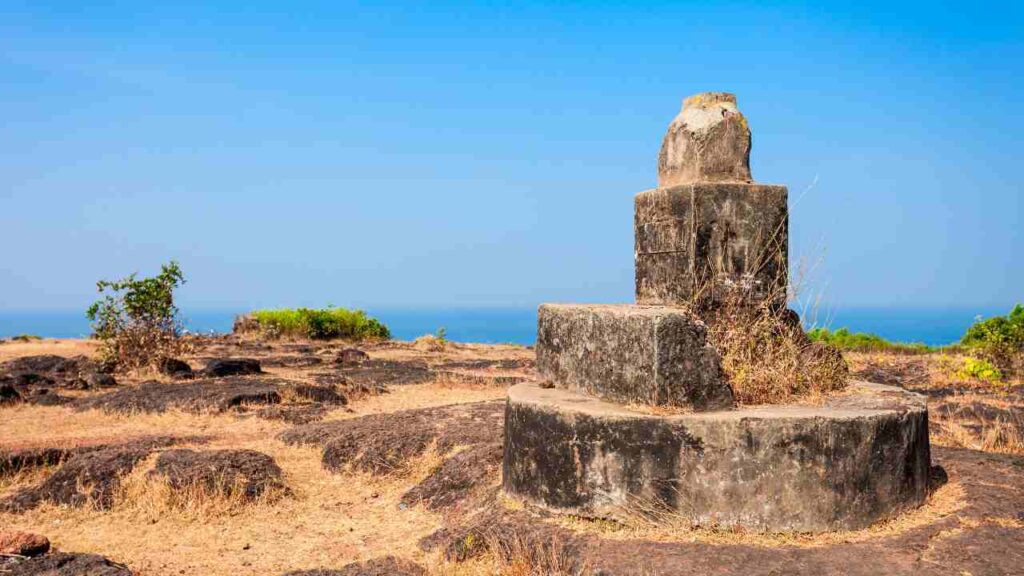
The entire Chandor was in close walls, which was revealed during different phases (in 1974, 2001) of the excavation. Still, the walls of Chandor Fort that run across the village are known as a “Kottan,” derived from the Kannada word ‘Kote’ meaning ‘Fort.’ Within the dense vegetation wall extending to the Kushavati River, the 11th-century ruined Shiv-nandi temple known as ‘Isvorachem’ was also excavated. The brick temple consists of Garbhagriha surrounded by Pradhakshinapath, a large Sabhamandapa, and a medium-sized Mukhamandapa.
Current situation of Chandor Fort
The Shiv-nandi statue is now surrounded by modern brick in order to preserve it. Although the original Fort is lost with time lacking preservation, the ASI has created a model of the Chandor Fort, which can be viewed at the ASI Museum at Old Goa. Despite the historical importance of this fort, this fort and the monuments have become history, and probably, the Chandor Fort is among the hidden forts of Goa.
| Timing | No fixed time to visit |
| Entry Fees | Nill |
| Location | Cotta Chandor Goa, 9 km from Margao city |
4- Betul Fort of Goa
In the history of most forts in Goa, you will see that it was either built by the Portuguese or Ancient rulers before colonization. The Betul fort is probably the only one in Goa that Shivaji Maharaj built, and probably this could be the last fort he made before he died in 1680.
Nonetheless, in a pact with King Sunda (Soundekars) in 1763, the Portuguese captured the Fort and converted it into a custom house, police station, and post office.
Current situation of Betul Fort of Goa
After the liberation, this fort didn’t get much limelight; hence it remained unexplored. However, in 2014, along with the Goa Heritage Action Group, some heritage lovers cleared the place and informed locals about the heritage site. The Betul Fort is among the few Forts in South Goa, a tourist attraction.
| Timing | 9 am to 6 pm |
| Entry Fees | Nill |
| Location | Quitol, Canaguinim, Goa |
5- Fort Aguada
Aguada Fort is strategically located on the mouth of river Mandovi and the Arabian Sea from the other side. It was Constructed in 1612 by the Portuguese and named Aguada, which means ‘Watery.’ The name is not derived because Aguada Fort is from three sides covered in water, but because of the large reservoir of the water tank with the capacity to store water up to 2 376,000 gallons.
The Aguada Fort in Goa included a moat, water storage, lighthouse, and secret escape passage. It was built to safeguard the coast from the non-allied Europeans coming to Goa through waterways by destroying their ships and refueling water in Portuguese ships for further journeys. The Aguada Fort lighthouse is Asia’s oldest lighthouse, built in 1864.
Current situation of Aguada Fort in Goa
Aguada Fort has been beautifully restored and now offers enhanced facilities for tourists’ safety and convenience. However, these improvements come with a nominal fee, unlike the previous free entry.
| Timing | 9 am to 5 pm |
| Entry Fees | 25/- per head Indian, 300/- per head foreigner, Free for childrens below 15 |
| Location | Candolim, Goa |
6- Chapora fort
The Chapora fort has a history rolling over from the hands of the Mughals to Portuguese to Marathas right from its construction in the 16th century by Adil Shah around 1505 to defend against potential invasions, especially Portugues. Nonetheless, the Portuguese captured the Fort in 1510 but abandoned it due to its location on a barren hill. Again, in the 17th century, the Portuguese rebuilt the Chapora fort to reinforce their control over the area.
Current situation of Chapora Fort in Goa
Ever since the Dil Chahta hai movie was released, the Chapora fort is less known for its historical importance and more as Dil Chahta hai Fort. The tourists visit this fort to click their Pictures in the same pose. Moreover, the picturesque view of Vagator beach also attracts tourists. Moreover you can do a lot of shopping from the shops you will find on the way climbing up to reach the fort.
| Timing | 8 am to 5 pm |
| Entry Fees | Nill |
| Location | Chapora fort Trail, Vagator |
7- Tiracol Fort
The history of Tiracol Fort in Goa is a fascinating tale of colonial rivalries and changing hands over the centuries. This fort, also known as Fort Tiracol or Terekhol Fort, is located on the northern tip of Goa, overlooking the Arabian Sea and the Tiracol River.
The fort’s history dates back to the 17th century when the Marathas constructed it to protect their territory from Portuguese incursions. However, it didn’t take long for the Portuguese to capture the fort in 1746 during a military campaign. Under Portuguese rule, Tiracol Fort served various purposes, including a military outpost and a defense post against pirates and invaders. The Portuguese significantly expanded and fortified the structure during their occupancy.
Current situation of Tiracol Fort in Goa
The Fort offers breathtaking views of the surrounding landscape and the Arabian Sea, making it a popular destination for visitors to explore its historical past and enjoy its scenic beauty. You can visit the Fort by ferry, which can be boarded from Querim. Despite converting the fort into a beautiful Tiracol Heritage Hotel, it is still open for tourists.
| Timing | 9 am to 6 pm |
| Entry Fees | Nill |
| Location | Tiracol, North Goa |
8- Reis Magos Fort
The Reis Magos Fort situated on the northern bank of the Mandovi river was constructed in 1493 by Adil Shah to keep eye on the movements of the Portugues. The Portuguese, led by Afonso de Albuquerque, captured the fort in 1510, marking a significant turning point in Goa’s history. They made several modifications and renovations to strengthen their defenses. In 1707, the Marathas under King Sambhaji briefly took control of the fort, but the Portuguese eventually regained it.
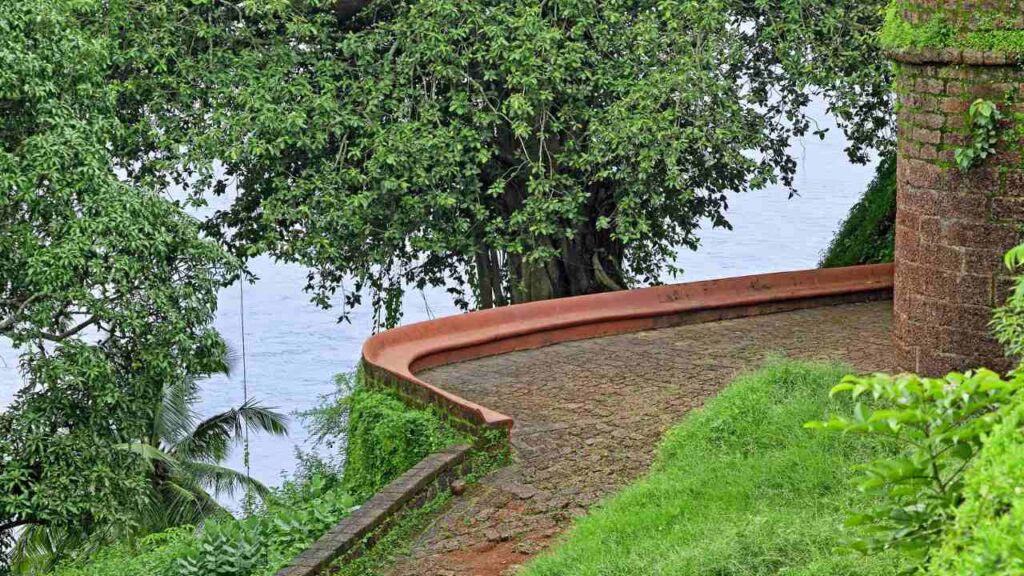
Current situation of Reis Magos Fort in Goa
Today, the Reis Magos Fort is a beautifully restored historical monument, offering visitors a glimpse into Goa’s past. It houses a cultural and heritage center, making it an excellent place to learn about the region’s history and heritage while enjoying panoramic views of the surrounding landscapes and the Mandovi River.
| Timing | 9 am to 5 pm |
| Entry Fees | 50/- per adult, Rs. 25/- per student, Nill for children below 8 yrs |
| Location | Bardez taluka, 8.4 km from Panaji |
9- Corjuem Fort
The Corjuem was built in the 18th century in 1705 by the Portuguese to defend their territory against potential invasions by neighboring Marathas and Bhonsles. Corjuem Fort served as a critical outpost in the defense network of Portuguese-occupied Goa. It was part of a series of forts and defensive structures that protected the borders of Goa from various adversaries. The fort featured thick laterite stone walls and a small chapel within its walls dedicated to St. Anthony.
Over the years, as the political landscape changed and Goa faced different rulers, the fort lost its military importance and eventually fell into a state of disrepair and neglect.
Current situation of Corjuem Fort in Goa
The Corjuem Fort, which had been neglected in the past, underwent extensive restoration work beginning in 2021 and probably will be completed in 2023. With its rich history and breathtaking views, the fort will be open to tourists and visitors. A recent announcement by the Corjuem MLA revealed that an annual Corjuem festival will be celebrated at the fort, further enhancing its appeal as a cultural and historical attraction.
| Timing | It is close till completion of renovation |
| Entry Fees | Nill but there could be fee implemented after renovation |
| Location | Aldona village, Bardez taluka |
10- Alorna Fort
Fort Santa Cruz de Alorna, also known as Halarn Fort or Alorna Fort, is among the oldest forts in Goa, located approximately 30 kilometers from Mapusa. Alorna Fort was built in the 17th century by the Bhonsles of Sawantwadi to protect their territory of Pernem, Maneri, and Bicholim from Maratha and the river passage from Portugues. This fort didn’t have any semi-residential structure inside of it; instead, it was more of a fortification to repeal the attacks of the enemy.
The ASI restoration of Alorna Fort drew inspiration from the sketches and descriptions of the fort made by the Portuguese traveler Lopes Mendes in the 19th century. His records provided valuable guidance for the restoration efforts, helping preserve the historical significance of this ancient fort.
Current situation of Alorna fort in Goa
The restoration of Alorna Fort is an ongoing project which aims to enhance its historical appeal. This restoration effort involves various reconstruction activities to ensure the fort’s preservation and contribute to its visual and structural improvement.
Due to the ongoing restoration, the fort won’t be open to locals and tourists. Further information about the Entry fee and visiting hours will be updated post-renovation.
| Timing | It is close till completion of renovation |
| Entry Fees | Nill but there could be fee implemented after renovation |
| Location | Alorna |
11- Colvale Fort
The Fortaleza de São Sebastião, also known as the Tivim Fort, is a historic fort in Goa, India. Built-in 1635 by order of the viceroy D. Miguel de Noronha, conde de Linhares, and was completed in 1681 under the supervision of Count of Alvor. Colvale Fort is the fortification that stretches from Thivim village to Colvale, which served as a protective barrier against threats from the Bahamanis and later the Marathas. The fort included a canal with a high wall acting as a moat and a series of guard houses, some still visible as ruins today. It is a testament to Goa’s rich history and strategic importance during colonial times.
Current situation of Colvale Fort of Goa
Currently, the Colvale Fort lies in ruins due to negligence by the Portuguese after capturing the Pernem, which continued post-liberation. However, if you explore the fort’s premises, you can still spot remnants of old structures and a concealed tunnel that once served as a hidden pathway to Thivim but is now closed. Visitors need to exercise caution when exploring the fort, as no safety measures are in place. No official news regarding restoration efforts by the Archaeological Survey of India (ASI) or the Goa Government exists.
| Timing | no specific time allotted |
| Entry Fees | Nill |
| Location | Colvale |
12- Chhatrapati Shivaji Maharaj Fort Ponda
Ponda Fort in Goa has a rich history. Built in the 17th century to defend against the Portuguese, it changed hands several times. Initially held by the Adil Shahi Kingdom, it was later captured by Shivaji Maharaj in 1675. Later, during Portuguese rule, it came under Maratha control, facing battles and damage. In 1783, it was ceded to the Portuguese. The fort faced neglect for 175 years until the Indian Govt. took charge of it, and it was finally renovated in 1977 and is now a proud symbol of Goa’s heritage.
Current situation of Ponda fort in Goa
Ponda Fort, also known as Chhatrapati Shivaji Fort in Farmagudi, Ponda, pays homage to Shivaji Maharaj with a statue erected by the pro-Marathi Maharashtrawadi Gomantak Party. The fort is accessible even by local bus. Moreover, the fort is well-preserved and open year-round for tourists. However, the true essence of the place comes alive during Shivaji Jayanti, celebrated with great enthusiasm, making it a delightful experience for visitors fortunate enough to be in Goa during this festival.
| Timing | 9 am to 5 pm; every day |
| Entry Fees | Nill |
| Location | Farmagudi, Ponda |
13- Juve Fort
Although little is known about the Juve Fort, also known as the St. Estevam Fort, according to historical records from the Directorate of Archives & Archaeology Department, this fort was constructed in 1668 by the Portuguese on St. Estevam island to protect the eastern and northeastern boundaries of their occupied territories in Goa. The fort’s layout included structures for storing arms and providing shelter to soldiers. Comparatively, Juve fort is probably the smallest fort in Goa.
Like many other forts in Goa, the Juve Fort changed hands during its history. It briefly fell under the control of the Maratha King Chhatrapati Sambhaji in 1683 but wasn’t actively used after the battle on the nearby island of Santo Estevao.
Adjacent to the Juve fort stands a statue of Christ the King, brought from Rome in 1926 by Father Antonio Leandro Roberto Da Rosa. It was installed on December 16th of that year, and the first mass was held on December 27th, 1926. Since then, the local villagers have celebrated this event annually on December 27th.
Current Situation of Juve Fort in Goa
Juve Fort may be modest in size, with just one small structure, but it’s true charm lies in its breathtaking surroundings. From this vantage point, you can soak in panoramic views of the Bicholim ferry point on one side and the serene Old Goa on the other. The lush greenery surrounding the fort paints a picture-perfect setting, especially during sunset. While it may not be a tourist hotspot, it’s a beloved gem among the locals, who flock here to witness the mesmerizing sunset over this tranquil landscape.
| Timing | 8.30 am to 6.30 pm |
| Entry Fees | Nill |
| Location | St Estevan island, approximately 3 km from Marcela. |

